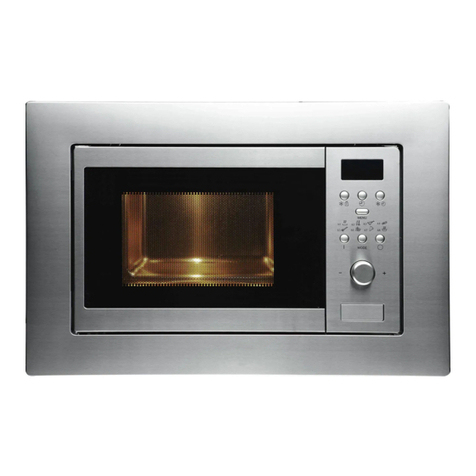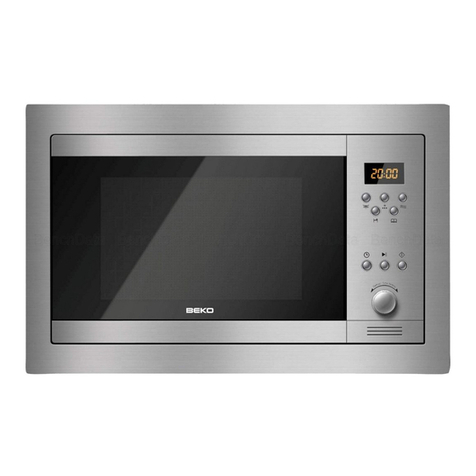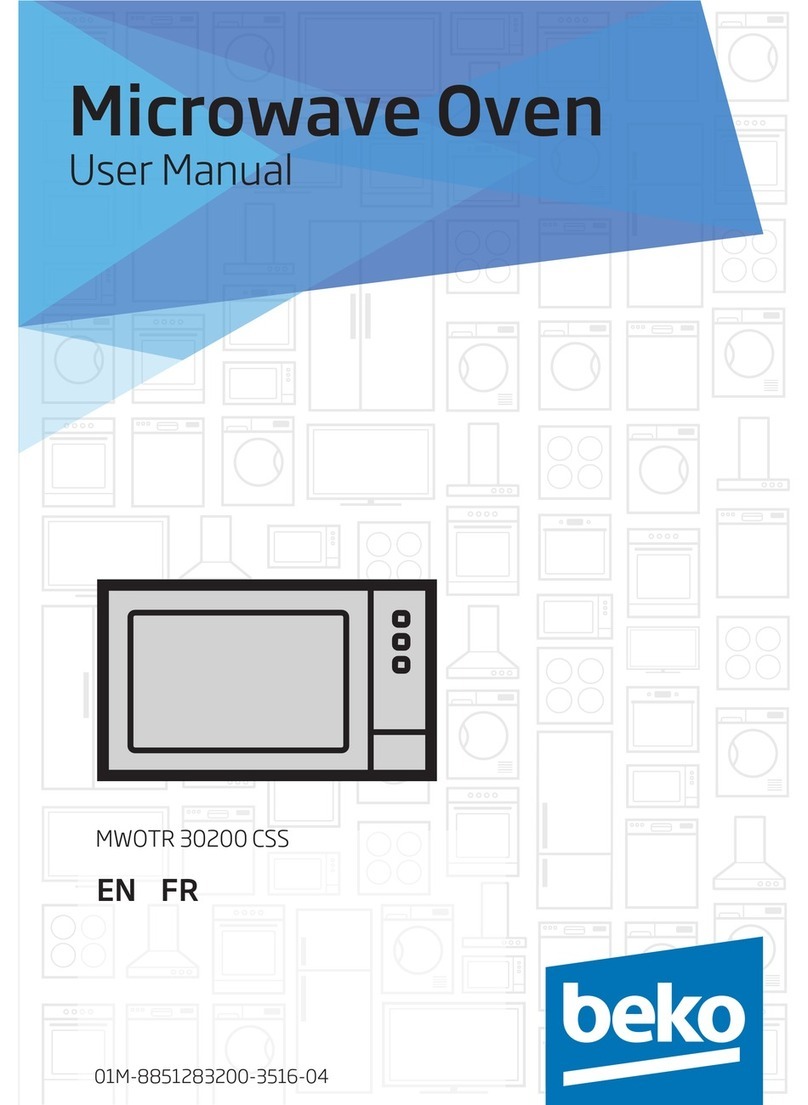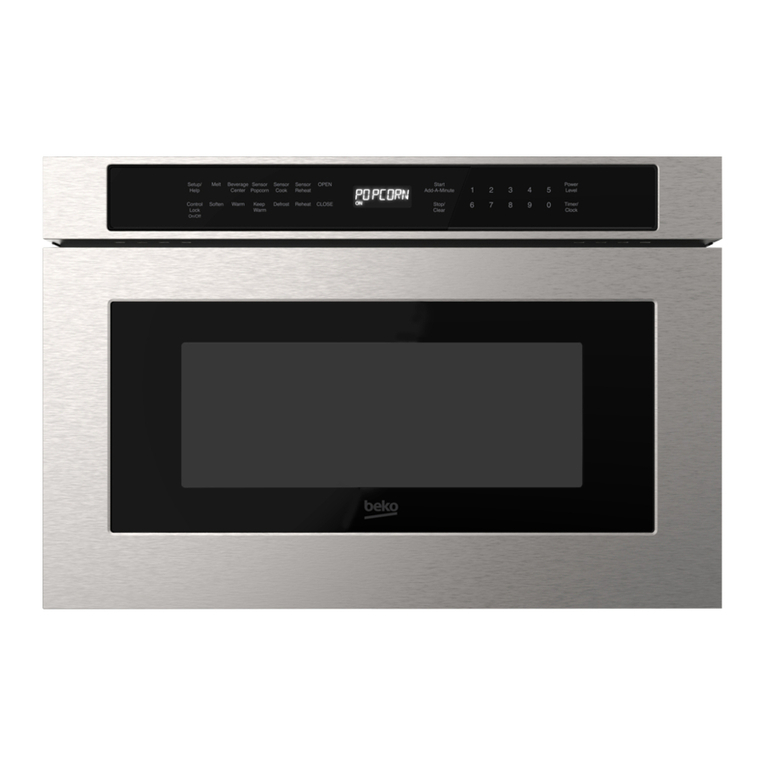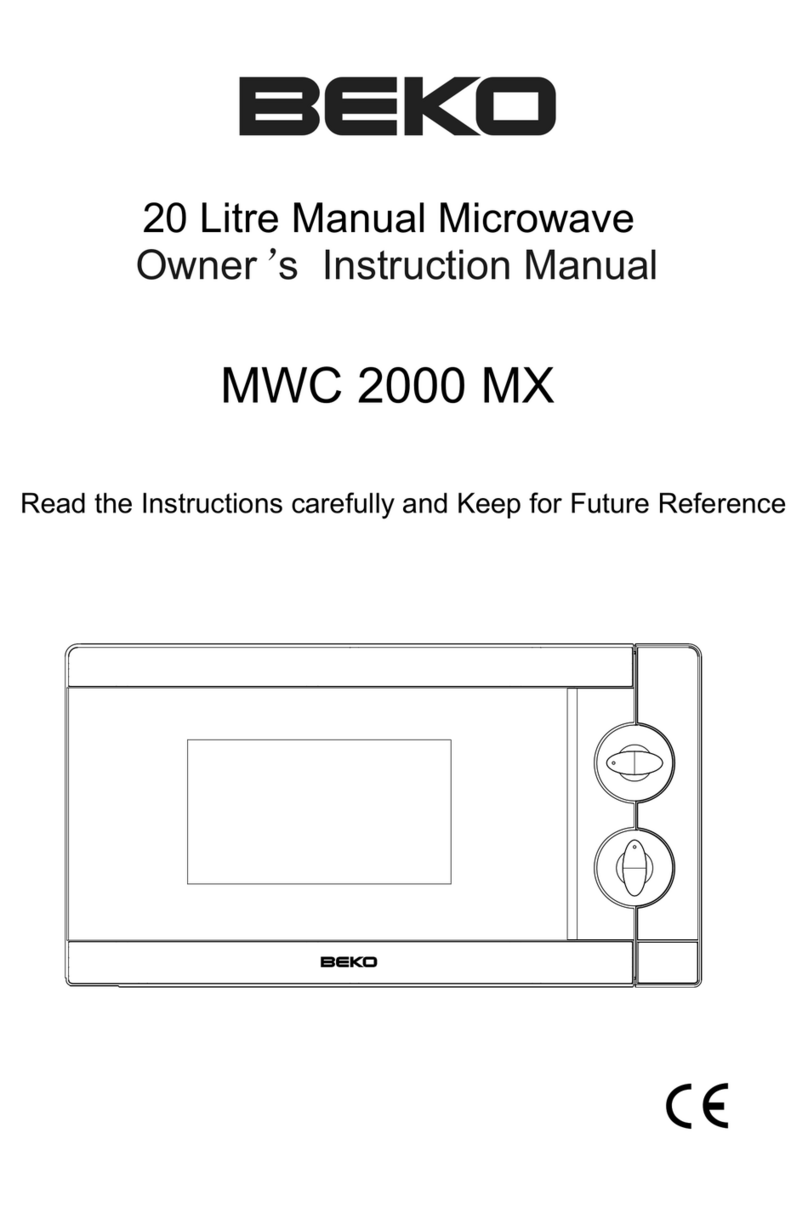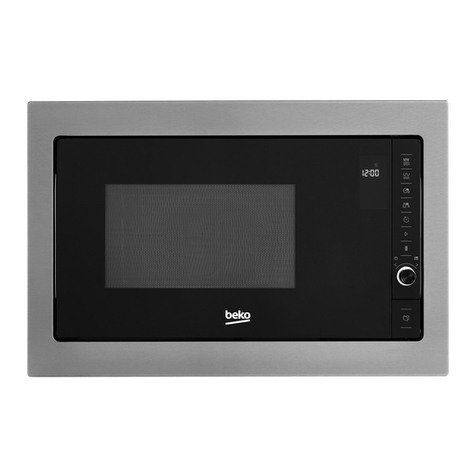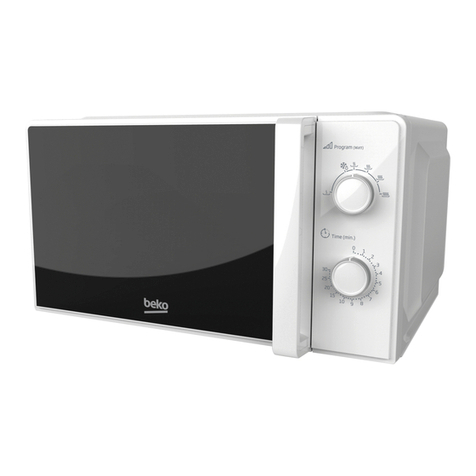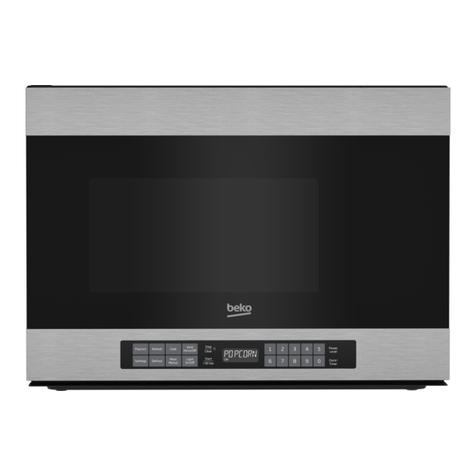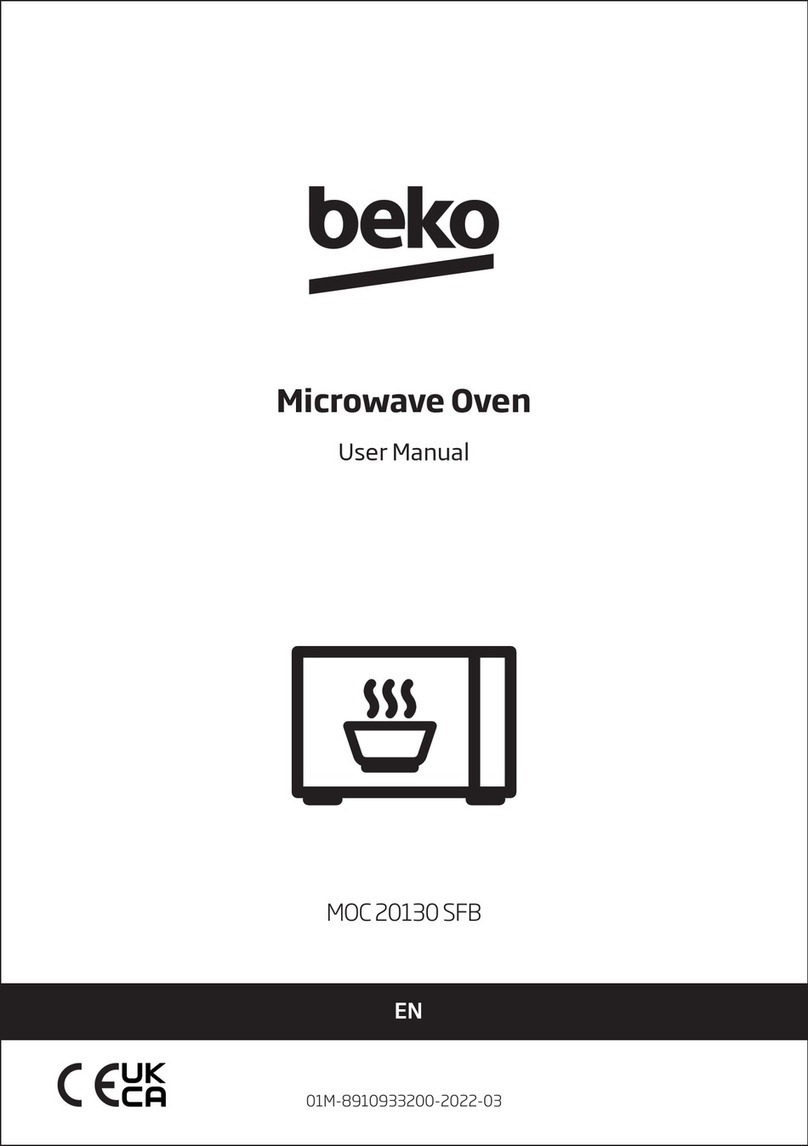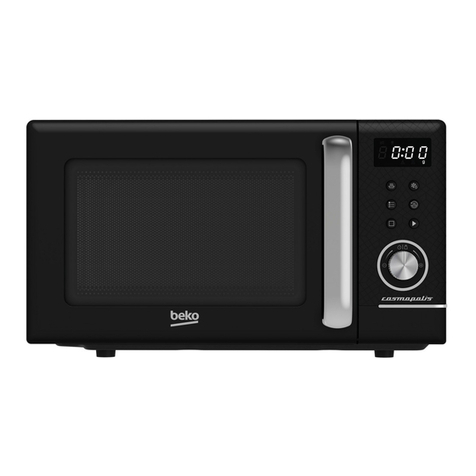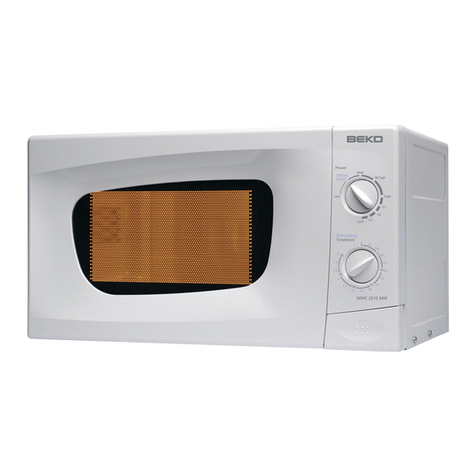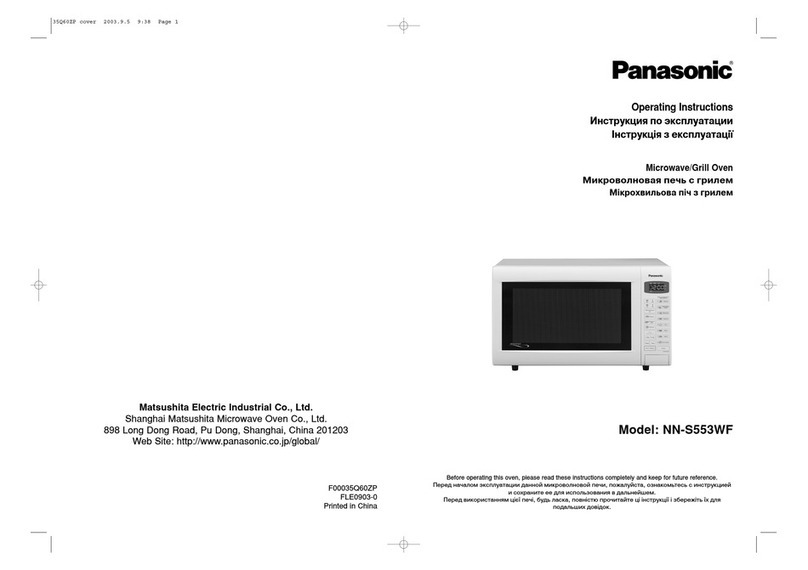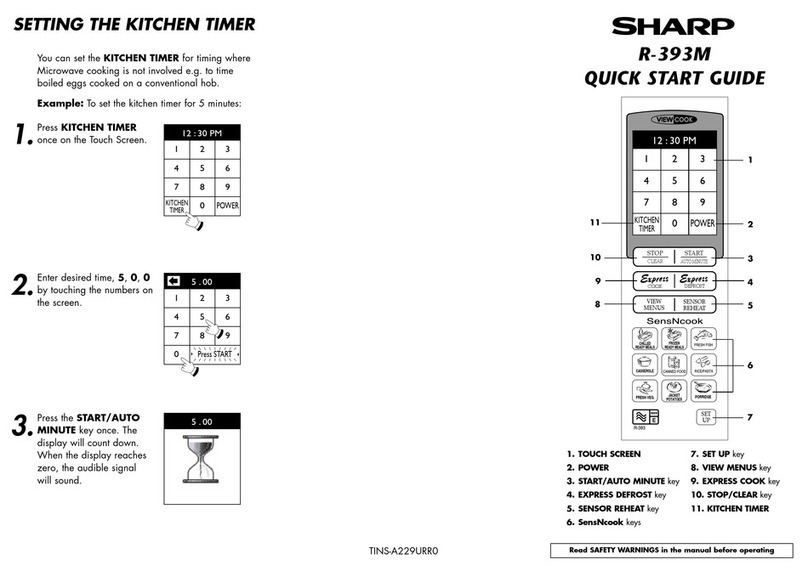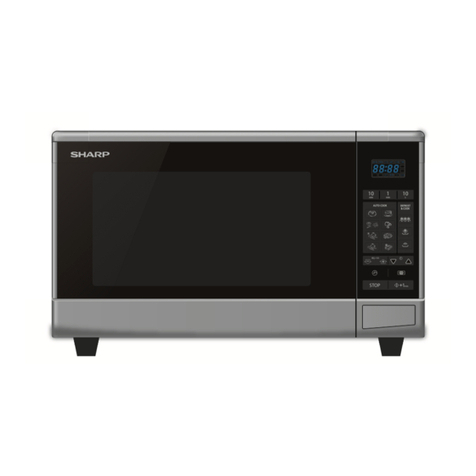
Microwave Oven / User Manual
6 / 40 EN
1Important safety and environmental
instructions
•Use gloves while taking any kind
of heated food out.
•The appliance and its accessible
surfaces may be very hot when
the appliance is in use.
•Door and outer glass may be very
hot when the appliance is in use.
1.1.1 Electrical safety
•If the supply cord is damaged, it
must be replaced by the manu-
facturer or its service agent or a
similarly qualified person in order
to avoid a hazard.
•Beko Microwave Ovens comply
with the applicable safety stan-
dards; therefore, in case of any
damage on the appliance or
power cable, it should be repaired
or replaced by the dealer, service
center or a specialist and autho-
rized service alike to avoid any
danger. Faulty or unqualified re-
pair work may be dangerous and
cause risk to the user.
•Make sure that your mains power
supply complies with the infor-
mation supplied on the rating
plate of the appliance.
The only way to disconnect the
appliance from the power supply
is to remove the power plug from
the power outlet.
•Use the appliance with a groun-
ded outlet only.
•Never use the appliance if the
power cable or the appliance it-
self is damaged.
•Do not use this appliance with an
extension cord.
•Never touch the appliance or its
plug with damp or wet hands.
•Place the appliance in a way so
that the plug is always accessible.
•Prevent damage to the power
cable by not squeezing, bending,
or rubbing it on sharp edges. Keep
the power cable away from hot
surfaces and naked flame.
•Make sure that there is no dan-
ger that the power cable could
be accidentally pulled or that so-
meone could trip over it when the
appliance is in use.
•Unplug the appliance before each
cleaning and when the appliance
is not in use.
•Do not pull the power cable of the
appliance to disconnect it from its
power supply and never wrap its
power cable around the appliance.
•Do not immerse the appliance,
power cable, or power plug in
water or any other liquids. Do not
hold it under running water.

